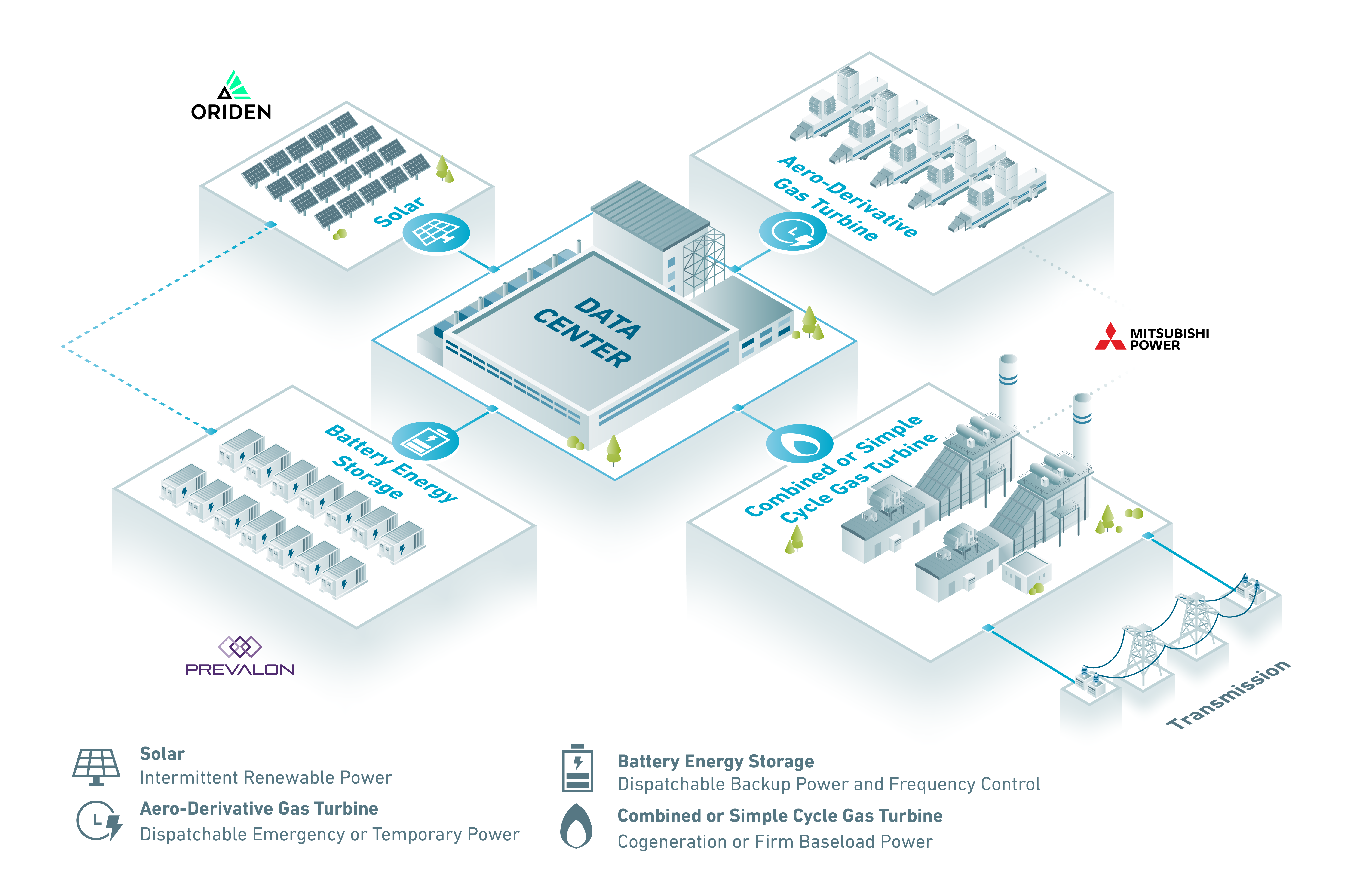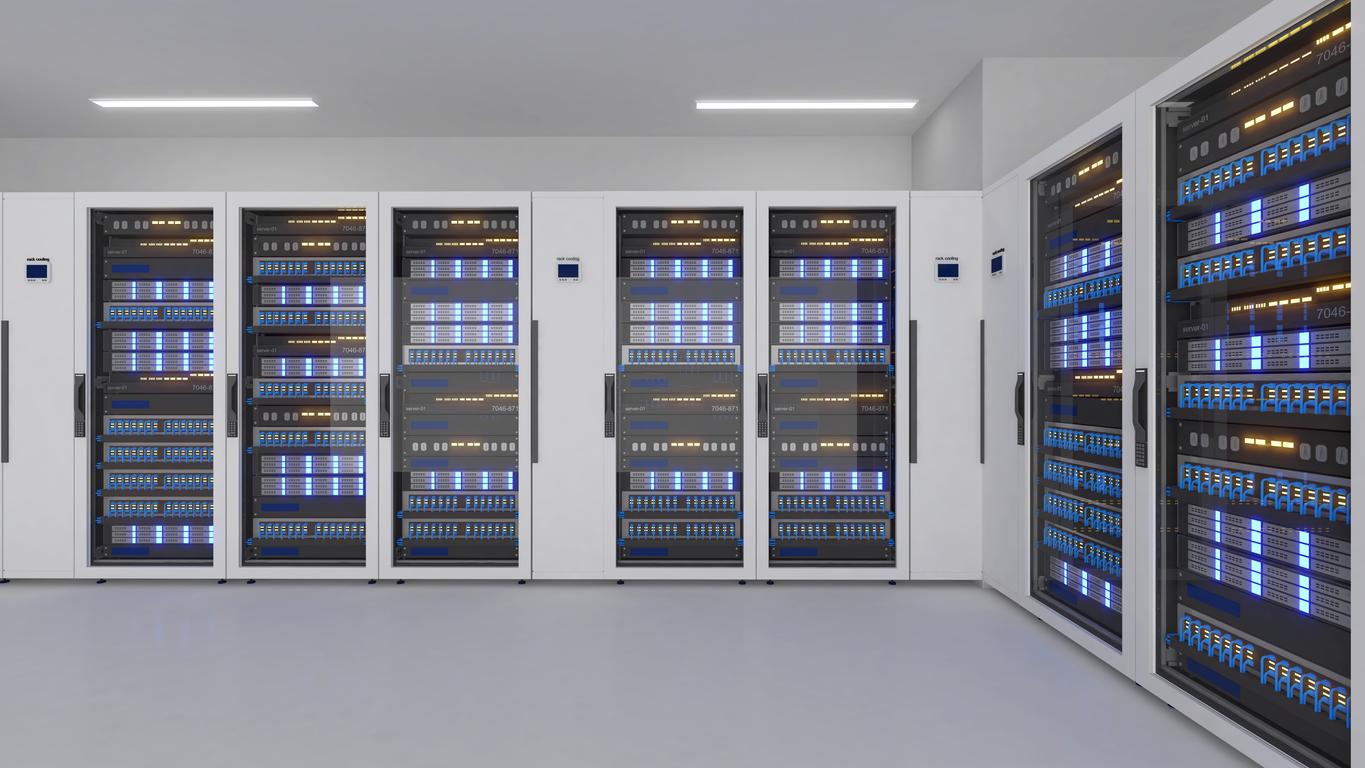
INSIGHTS
The Future of Power: How AI and Data Centers Are Transforming the Energy Workforce

As artificial intelligence (AI) continues to expand across industries, its integration into the energy sector is not only reshaping how we produce and manage power, but also how we build, train, and support the workforce that makes it possible. From data centers to predictive maintenance tools, AI is rapidly transitioning from a theoretical concept to a foundational layer of modern industrial operations.
For the energy sector, the implications are profound. At the intersection of physical infrastructure, computational capability, and human capital, AI is becoming as integral as electricity itself. The future of power lies not only in generation capacity, but in the intelligence applied to make it possible.
Understanding the AI Stack in Energy: From Data to Supercomputing
First, we must clarify the types of AI in play. "Artificial intelligence" is often used as a catch-all term, but there are key distinctions:
• Traditional AI (or rules-based systems) has long supported industrial automation, relying on pre-programmed logic and decision trees. Think Alexa and Siri – assistants that can quickly scan their databases and give us simple answers or complete basic instructions.
• Machine learning (ML) refers to systems that can analyze historical data and improve predictions or classifications over time without explicit reprogramming. Ever wonder how Netflix knows what to recommend to you? Turns out we’re more predictable than we’d like to admit.
• Generative AI represents a more recent evolution, using large language models (LLMs) and transformer architectures to create new content, simulate conversations, or assist with reasoning tasks. The recent advances made in generative AI are stunning, and don’t seem to be slowing down anytime soon.
• Agentic AI is the next wave of artificial intelligence, and as the name might suggest, the hallmark of this wave is that the AI now possesses a form of agency. That means not only making decisions and recommendations, but also being empowered to take action. It’s very likely that the most common use case of this form of AI will be primarily customer-facing. Think online banking and health care. Agentic AI will change how, when, and why we communicate with other people.
Predictably, most of the excitement and headlines often center around generative tools like ChatGPT, but it’s important to note that it's the integration of all types – particularly ML and automation – that holds the most potential in operational settings. The world’s industries must now engage in managing data flow, compute access, and network resilience at scale. And the power sector is no exception.
AI-Augmented Labor and the Future Energy Workforce
The energy workforce is already experiencing the early effects of AI integration. With a U.S. unemployment rate hovering around 4.1%, (near historic lows) companies face urgent labor shortages in skilled trades, technical operations, and field engineering (U.S. Bureau of Labor Statistics, 2024).
AI can help bridge that gap. Predictive analytics platforms are already being used to identify maintenance risks, optimize construction sequencing, and flag safety concerns before they materialize. One case study from Kiewit Corporation involved a machine-learning predictive safety index. This tool forecasted a site incident, and the information was brought in. Unfortunately, but perhaps unsurprisingly, the information was taken with a bit of skepticism from the workforce, preventing proactive action. The prediction ended up being accurate, and Kiewit quickly pivoted and adopted the tool, which is now regularly deployed in their projects and increasing safety. As AI only gets smarter and is given more information, these predictions must proportionally be taken more seriously and actioned-upon. But the central challenge remains: technological capability is advancing faster than cultural trust.
To fully leverage predictive AI, companies must invest in change management strategies and trust-building efforts. The algorithms work, but the workforce must believe in them and understand their value.
Inclusive Energy Jobs Through AI Tools
Perhaps one of the most transformative impacts of AI is its potential to support a more inclusive labor force. Christy Stoffel, General Counsel for Mitsubishi Power, notes that “individuals who have been traditionally excluded from technical roles…” – due to neurodivergence, cognitive learning challenges, or language barriers – … “can now use AI tools to bridge that gap.” Generative AI can help them write technical reports, structure project plans, or troubleshoot common issues through natural language prompts.
This opens the door to a broader talent pipeline and allows organizations to tap into overlooked labor pools. As AI tools become standard workplace utilities, the ability to participate in complex industrial systems may no longer be limited by formal education or conventional communication styles.
Energy as the Backbone of AI
Finally, there’s a symbiotic relationship that often goes unspoken: AI drives exponential demand for power – and only the energy sector can meet that demand. Data centers, particularly hyperscale facilities, are projected to consume up to 8% of global electricity by 2030, with AI workloads being a primary contributor (IEA, 2024).
This creates a feedback loop: AI drives energy demand → energy companies expand capacity → AI tools help manage and optimize that capacity → repeat.
It also positions the energy sector not just as a user of AI, but as its primary enabler. For the first time in a century of power sector history, a foundational shift is upon us. From infrastructure to social patterns to human geography considerations, the relationship between power production and data center demands will be the defining relationship of our generation. The way people work, where they’re working from, and when they work will change greatly in the coming decades. Global grids and energy ecosystems need to be ready for those changes and more. Banking, finance, and academics are also increasingly AI-integrated and relying on AI to provide a seamless experience for users. No matter what the details end up being, the bottom line is clear – reliable, resilient, and clean power is the foundation on which every generative tool, predictive model, and digital twin will run.
Conclusion: Intelligence as Infrastructure
AI is no longer a tool to be adopted as much as an infrastructure to be integrated. For the energy sector, this means embracing a dual mandate: continue building the physical systems that power the world, while simultaneously cultivating the digital systems that will manage it.
By aligning data strategy, workforce development, and energy planning, the industry has an opportunity to lead not just in megawatts, but in intelligence, inclusion, and innovation.
Cited & Referenced
• U.S. Bureau of Labor Statistics. (2024). Employment Situation Summary.
• International Energy Agency (IEA). (2024). Electricity 2024: Analysis and forecast to 2026.
Data centers need power that is reliable, sustainable, and scalable. Mitsubishi Power delivers energy solutions designed to meet the demands of the AI era



